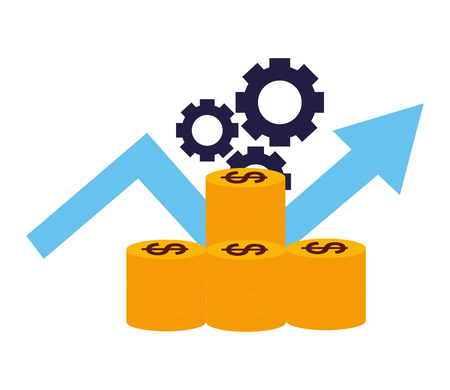Embracing the Side Hustle Mindset
If you’ve ever scrolled through Instagram and seen people working from beaches or coffee shops, you might wonder: how did they break free from the 9-5 grind? The answer is often side hustles. In recent years, there’s been a huge cultural shift in America toward embracing freelance work and side gigs—not just as a way to make extra money, but as a path to financial independence and early retirement.
Why Are Side Hustles So Popular in America?
Americans are known for their entrepreneurial spirit. Over the last decade, rising living costs, changing job markets, and a desire for flexibility have pushed many people to look beyond traditional jobs. According to a 2023 study by Upwork, over 60 million Americans freelanced last year. That’s about one-third of the workforce! Side hustles are no longer just for college students or people between jobs—they’re for everyone who wants more control over their finances and future.
Common Myths About Freelancing
| Myth | Reality |
|---|---|
| You need special skills to start freelancing. | Many side hustles use everyday skills—writing, driving, organizing, teaching. |
| Freelancers don’t have job security. | Diversifying your income with multiple clients can actually be more secure than one employer. |
| Side hustles take up all your free time. | You choose your workload—many freelancers work just a few hours each week. |
| You can’t get benefits as a freelancer. | There are now health plans, retirement accounts, and other resources designed for gig workers. |
The Power of Taking Initiative Outside Your 9-5
Starting a side hustle doesn’t mean quitting your day job overnight. It’s about using your evenings or weekends to test new ideas, build skills, and create extra streams of income. This initiative helps you:
- Pay off debt faster
- Save more for retirement or investments
- Explore new passions or career paths
- Build confidence in your abilities outside your main job
How Side Hustles Can Lead to Early Retirement
Imagine if your freelance gig brought in an extra $1,000 a month. That’s $12,000 per year—money that could go straight into savings or investments. Over time, these efforts add up, giving you more freedom and options when it comes to retiring early. Embracing the side hustle mindset is about recognizing opportunity everywhere—and seizing it on your own terms.
2. Finding Your Niche and Monetizing Your Skills
If you’re dreaming of early retirement through freelancing, the first big step is figuring out what you’re good at—and how to get paid for it. In today’s gig economy, there are endless side hustle options, but the key to real freedom is finding your unique niche and standing out from the crowd. Here’s how you can identify your marketable skills, discover high-demand opportunities, and make yourself shine on platforms like Upwork, Fiverr, and beyond.
Identifying Your Marketable Skills
Start by listing out everything you know how to do—no skill is too small! Think about your work experience, hobbies, education, or even things friends often ask you for help with. Once you have your list, ask yourself these questions:
- Which skills do I enjoy using the most?
- Are people willing to pay for this skill?
- Is there a gap in the market that I can fill?
You can use the table below to help organize your thoughts:
| Skill | Enjoyment Level (1-5) | Market Demand | Monetization Ideas |
|---|---|---|---|
| Graphic Design | 5 | High | Logo design, branding packages |
| Copywriting | 4 | High | Blog posts, product descriptions |
| Social Media Management | 3 | Medium-High | Content calendars, post scheduling |
| Tutoring (Math/English) | 4 | Medium | Online lessons via Zoom or Skype |
| Coding (Web Development) | 5 | Very High | Website builds, bug fixes, app development |
Discovering In-Demand Freelance Opportunities
The next step is researching what clients are actually looking for. Sites like Upwork and Fiverr have trending categories you can browse. Check out job postings and see which gigs have lots of open projects or repeat buyers. You’ll often find high demand in areas like:
- Content writing and editing
- Digital marketing and social media management
- Web and mobile app development
- Virtual assistance and customer support roles
- E-commerce services (like Shopify store setup)
- Video editing and animation creation
- Translation services for multiple languages
- Pinterest or Instagram management for small businesses
If you already have some skills but aren’t sure where they fit in the freelance world, try searching for them on these platforms to see what kinds of jobs pop up.
Standing Out on Upwork, Fiverr & Beyond
Your profile is your storefront—make it count! Here’s how to leverage your strengths so clients pick you over the competition:
- Create a killer profile: Use a professional photo and write a headline that shows off your specialty.
- Nail your pitch: Personalize every proposal with specific solutions tailored to each client’s needs.
- Add samples: Showcase your best work—even if it’s from a personal project or mockup.
- Earning badges & certifications: Many platforms offer tests or certifications; take them to boost your credibility.
- Pile up reviews: Start with smaller gigs to get positive feedback quickly—social proof goes a long way!
A Quick Comparison of Major Freelance Platforms:
| Platform Name | Main Strengths | Niche Examples |
|---|---|---|
| Upwork | Diverse projects, long-term clients, hourly & fixed-price jobs | Coding, copywriting, admin support |
| Fiverr | Selling packaged “gigs,” fast transactions, creative services | Design, video editing, voiceovers |
| Toptal | Picks top freelancers only; higher rates | Coding, finance consulting |
Your Action Steps:
- Create an account on 1–2 major freelance sites.
- Add your top 1–3 skills to your profile.
- Browse trending gigs daily to spot new opportunities.
The journey toward early retirement starts by discovering what makes you unique—and learning how to sell those strengths in the growing freelance market. With focus and persistence, you’ll find your niche and start stacking up those side-hustle dollars.

3. Building Your Brand and Securing Clients
Crafting an Authentic Personal Brand
Your personal brand is your calling card in the U.S. freelance landscape. It’s not just a logo or a catchy tagline—it’s the vibe you bring, your work ethic, and what makes you stand out from the crowd. Start by identifying your strengths and unique skills. Think about what clients compliment you on, or what you enjoy most in your work. Use this as the foundation for your brand story across all platforms, from LinkedIn to your portfolio website.
Quick Steps to Build Your Brand
| Step | Action |
|---|---|
| 1. Define Your Niche | Choose a specific area or industry where you excel. |
| 2. Create Consistent Profiles | Align your photo, bio, and tone on social media & websites. |
| 3. Showcase Your Work | Use an online portfolio to display top projects and testimonials. |
| 4. Share Your Voice | Post insights, tips, or case studies relevant to your field. |
Networking Online and Offline
In the U.S., networking isn’t just about exchanging business cards at events—it’s about building real relationships that can lead to gigs and referrals. Get active in Facebook groups, LinkedIn communities, and local meetups related to your side hustle. Don’t hesitate to send a friendly DM introducing yourself or follow up after meeting someone at an event.
Effective Networking Tips:
- Online: Engage with posts, comment thoughtfully, and share useful content.
- Offline: Attend workshops, co-working spaces, or industry mixers—bring business cards and a quick intro pitch!
- Follow Up: Always send a thank-you email or message after connecting with someone new.
Pitching Your Services Like a Pro
A strong pitch sets you apart in a competitive gig economy. When reaching out to potential clients—whether by email or through job boards—keep it short but personalized. Mention how you can solve their specific problem and link to relevant samples of your work. Remember, companies in the U.S. appreciate clarity and confidence.
Email Pitch Template Example:
| Section | What to Include |
|---|---|
| Subject Line | Crisp & clear (e.g., “Experienced Graphic Designer Ready to Help Your Brand Shine”) |
| Greeting & Intro | Name-drop if referred; otherwise, greet warmly and state who you are. |
| The Offer | Mention the client’s need and how you can help specifically. |
| Proof & Samples | Add links to relevant work or testimonials. |
| Call to Action | Suggest a call or next steps; be polite and direct. |
Sustaining a Steady Flow of Quality Clients
The secret sauce for early retirement through freelancing is consistency. Deliver great work every time, ask satisfied clients for referrals, and keep learning new skills that are in demand in the American market (like digital marketing or web development). Use tools like Trello or Google Calendar to stay organized and never miss deadlines.
- Stay Visible: Keep updating your profiles with new projects.
- Nurture Relationships: Check in with past clients—they might have new needs!
- Diversify: Balance short-term gigs with longer contracts for income stability.
4. Mastering the Money: Saving, Investing, and Tax Hacks
Setting Your Rates: Know Your Worth
One of the biggest hurdles for freelancers in America is figuring out how much to charge. Setting your rates too low can lead to burnout and make early retirement impossible. Too high, and you might price yourself out of opportunities. Here’s a quick guide to help:
| Experience Level | Suggested Hourly Rate (USD) | Notes |
|---|---|---|
| Beginner (0-1 year) | $20 – $40 | Start here if youre building your portfolio. |
| Intermediate (1-3 years) | $40 – $80 | Have a few clients and successful projects. |
| Expert (3+ years) | $80 – $150+ | Niche expertise or specialized skills. |
Check platforms like Upwork or Glassdoor to research standard rates in your industry, and don’t be afraid to adjust as your skills grow.
Tracking Income: Stay on Top of Every Dollar
A solid tracking system helps you see where your money comes from and where it goes. Use simple tools like Google Sheets or apps like QuickBooks Self-Employed or FreshBooks. Here’s what you should track:
- Client payments: Date, amount, project name.
- Expenses: Software subscriptions, office supplies, marketing costs.
- Savings & investments: Contributions to your retirement accounts and savings goals.
This habit makes tax season less stressful and helps you spot trends—like which services are most profitable.
Managing Taxes as a Freelancer
No one loves taxes, but freelancers need to be extra diligent since there’s no employer withholding taxes for you. Here are some American freelancer tax hacks:
- Quarterly estimated taxes: Pay the IRS every three months to avoid penalties.
- Deduct business expenses: Home office, internet bills, health insurance premiums can all lower your taxable income.
- Keep receipts: Digital copies are fine. Apps like Expensify or Shoeboxed make this easy.
- Use retirement accounts: SEP IRA, Solo 401(k), or Roth IRA contributions reduce your taxable income while building wealth for retirement.
Tax Deadlines at a Glance
| Date | What’s Due? |
|---|---|
| April 15 | File previous year’s tax return/pay first quarter estimated taxes |
| June 15 | Second quarter estimated taxes due |
| September 15 | Third quarter estimated taxes due |
| January 15 (next year) | Fourth quarter estimated taxes due |
Savings and Investments for Accelerated Freedom
The secret sauce to early retirement is making your money work for you. Here’s how freelancers can get ahead:
- Create an emergency fund: Aim for 6 months of living expenses in a high-yield savings account (Ally Bank, Marcus by Goldman Sachs).
- Piggyback on retirement accounts: Contribute regularly to a Solo 401(k) or SEP IRA; these have higher limits than regular IRAs.
- Diversify investments: Use low-fee index funds via Vanguard, Fidelity, or Charles Schwab. Consider real estate crowdfunding platforms like Fundrise if you want more variety.
- Automate everything: Set up automatic transfers so you save and invest without thinking about it each month.
- Shoot for FIRE: The Financial Independence, Retire Early movement encourages saving 50% or more of your income—big goal, but even aiming for half that will speed up your timeline!
Savings & Investment Comparison Table
| Account Type | Main Benefit | Annual Contribution Limit (2024) | Best For… |
|---|---|---|---|
| Solo 401(k) | Larger tax-deferred savings + loan option | $69,000 (combined employee + employer) | Sole proprietors with high income |
| SEP IRA | Simpler paperwork + high limit | Lesser of $69,000 or 25% of net earnings | Sole proprietors/freelancers with variable income |
| Roth IRA | No taxes on withdrawals in retirement | $7,000 ($8,000 if over age 50) | Younger freelancers expecting higher future tax rates |
| BROKERAGE ACCOUNT | No contribution limit; full investment flexibility | N/A | Earning beyond retirement account limits |
Your Next Steps: Put It All Together!
If you set smart rates, track every dollar, hack your taxes legally, and prioritize saving and investing—even small amounts—you’re paving the way for accelerated financial freedom as a freelancer. With discipline and the right tools, you’ll be well on your way toward early retirement!
5. Crafting Your Path to Early Retirement
Defining Your ‘Freedom Number’
Before you can truly plan your escape from the traditional 9-to-5, you need to know your target—your ‘freedom number.’ This is the amount of money you’ll need to have saved or invested to cover your living expenses without relying on a regular job. To calculate it, add up all your yearly costs (housing, food, insurance, entertainment, etc.), then multiply by the number of years you expect to need that income before Social Security or other benefits kick in. Don’t forget to factor in inflation and unexpected expenses.
| Expense Category | Monthly Cost ($) | Yearly Cost ($) |
|---|---|---|
| Rent/Mortgage | 1,500 | 18,000 |
| Utilities & Internet | 200 | 2,400 |
| Groceries & Dining | 600 | 7,200 |
| Health Insurance | 400 | 4,800 |
| Transportation | 300 | 3,600 |
| Entertainment & Travel | 250 | 3,000 |
| Total Yearly Expenses | $39,000 |
Crafting a Realistic Timeline for Early Retirement
Your timeline depends on two main things: how much you can save and invest each year, and how aggressively your investments grow. Break your goal down into manageable chunks. For example, if you want to retire in 10 years with $500,000 saved up, that’s about $50,000 per year in savings (not including investment growth). Use online calculators or apps like Personal Capital or NerdWallet to play with different scenarios and see what works best for you.
Sample Timeline Table:
| Year | Savings Goal ($) | Cumulative Savings ($) |
|---|---|---|
| 1 | 50,000 | 50,000 |
| 2 | 52,000* | 102,000* |
| 3 | 54,080* | 156,080* |
| 4-10+ | (Increase by 4% annually) | (Continue growing) |
*Assumes a 4% increase each year due to raises or side hustle growth.
Stacking Multiple Income Streams for Security and Growth
The key to reaching early retirement as a freelancer is stacking several income streams. Relying on just one gig can be risky—if it dries up, so does your cash flow. Instead, combine side hustles like freelance writing or design with passive income sources such as rental properties, dividend stocks, or selling digital products.
Types of Side Hustle Income Streams:
| Main Category | Description/Examples (U.S. Context) |
|---|---|
| Freelance Services | Writing for blogs/companies, graphic design projects on Upwork/Fiverr |
| E-commerce & Digital Products | Selling printables on Etsy or courses on Teachable/Udemy |
| Passive Investments | Earning from index funds/dividends via Vanguard or Robinhood |
| Real Estate | AIRBNB hosting or renting out property via Zillow/Trulia |
| P2P Lending & Other | Lending money via platforms like LendingClub; creating niche blogs with ad revenue |
Your Blueprint: Putting It All Together Step by Step
- Create a detailed budget and identify your freedom number.
- Create a realistic timeline using savings calculators and accounting for investment growth.
- Diversify your income by adding at least two additional side hustles alongside your primary freelance work.
- Revisit and revise your plan each quarter—life changes fast!
- Cultivate habits of saving and investing first before spending on wants.
- Treat each income stream as a mini-business—track progress and look for ways to optimize or expand.
- Cherish flexibility: Side hustles give you room to pivot when needed.
The journey to financial independence as a freelancer isn’t always smooth—but with a clear blueprint and multiple paths to income, you’ll be well-equipped to reach early retirement on your own terms.


